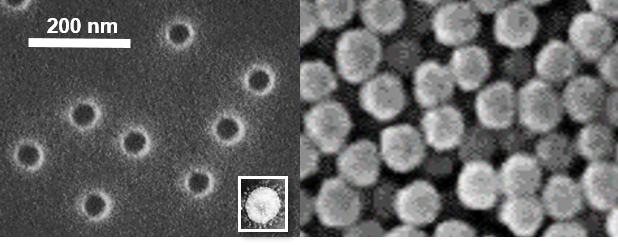Filtering coronaviruses from waste water
Professor Wolfgang Ensinger analyses nanopore membranes
2020/04/20
Professor Wolfgang Ensinger and his research group from the Department of Materials and Geosciences have been working together with the GSI Helmholtz Centre for Heavy Ion Research for many years in the field of manufacturing and using nanopores in plastic films. Nanopore membranes are also suitable for filtration and separation purposes – they can be used to filter corona viruses from wastewater.

While the research group is currently mainly working on nanopore based sensor technology of biomolecules, for example for medical diagnostics (LOEWE research cluster iNAPO and Centre for Synthetic Biology), the nanopore membranes were previously also investigated for filtration and separation purposes. This involved enriching organic molecules and gas molecules from mixtures and separating particles in solutions, such as blood cells from blood, aerosol particles collected in liquids or even suspended particles in beverages.
The dimensions of the pores in the films can be adjusted from diameters in the micrometer range down to the nanometer range using the ion track etching process. With diameters in the nanometre range, the separation of viruses – in the current situation of corona viruses – is also conceivable.




